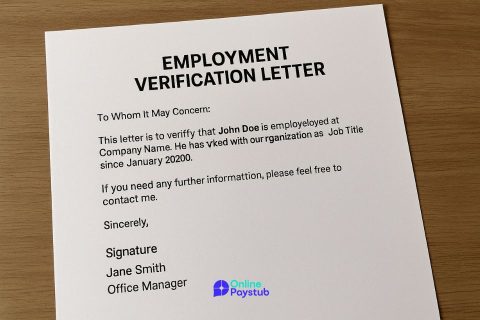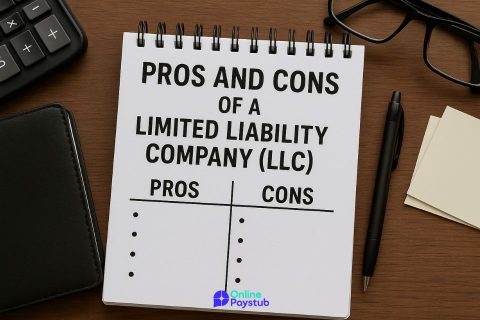Depreciation reflects the systematic allocation of a tangible asset’s cost over its useful life. Rather than recognizing the entire expense at the time of purchase, depreciation spreads the cost over several accounting periods, aligning it with the asset’s economic contribution to revenue generation.
From an accounting perspective, depreciation is classified as a non-cash expense, meaning no actual cash leaves the business during the periods it’s recorded. The financial outflow occurs at the time the asset is acquired. After that, depreciation simply adjusts the asset’s book value and reflects its gradual wear or obsolescence.
There are several recognized methods to calculate depreciation, including:
- Straight-line method, which allocates equal expense amounts across periods
- Declining balance method, which front-loads the expense
- Units of production, based on actual usage
The choice of method impacts both the income statement and balance sheet. Companies must select a depreciation strategy aligned with their asset usage patterns and relevant accounting standards such as GAAP or IFRS. This classification supports consistent financial reporting and reflects a more accurate picture of a firm’s asset valuation over time.
Depreciation is closely tied to the asset lifecycle, and understanding its role is essential for evaluating fixed asset performance, financial health, and investment decisions.
When Is Depreciation Considered an Operating Expense?
Depreciation is recognized as an operating expense when the asset being depreciated directly supports the core business operations. In such cases, the asset contributes to the company’s revenue-generating activities and is therefore considered part of the routine operating costs.
For example, if a manufacturing firm depreciates machinery used in its production line, the resulting expense is classified within Cost of Goods Sold (COGS), a major category of operating expenses. Similarly, if office buildings, equipment, or IT infrastructure are used by departments like sales or administration, their depreciation is recorded under Selling, General and Administrative Expenses (SG&A) on the income statement.
This treatment aligns with the matching principle in accounting: expenses should be recognized in the same period as the revenues they help generate. By including depreciation as an operating expense, firms offer a clearer view of recurring costs tied to business continuity.
It’s important to distinguish this from capital expenditures. While CapEx reflects long-term investment, operating expenses like depreciation are ongoing and necessary to maintain day-to-day operations.
In summary, depreciation is considered an operating expense if and only if the asset is essential to delivering a company’s principal products or services. This classification plays a key role in calculating operating profit, evaluating EBITDA, and assessing cost-efficiency metrics.
Can Depreciation Be a Non-Operating Expense?
Depreciation can be classified as a non-operating expense when the asset being depreciated is not involved in the company’s primary business operations. This typically applies to assets used in incidental, non-core, or supporting functions.
For example, if a retail company owns a building that it leases out and the building is not used for its core retail activity, the depreciation on that property may be categorized as a non-operating expense. Similarly, depreciation on assets associated with investment properties, unused production equipment, or idle facilities would not fall under operating expenses.
This distinction is essential for accurate financial reporting, especially when analyzing operating margin or core business profitability. Excluding non-operating depreciation helps investors and analysts isolate the company’s recurring operating performance, free from distortions caused by unrelated or exceptional asset usage.
Moreover, under frameworks like IFRS and GAAP, the classification hinges on the purpose of the asset. If the asset contributes to ordinary revenue-generating activities, depreciation remains an operating cost. If it serves a peripheral function, it is excluded from the operating section of the income statement.
Therefore, the treatment of depreciation is not one size fits all. Businesses must assess each asset’s operational role and apply consistent classification policies across reporting periods.
How Is Depreciation Treated on the Income Statement?
On the income statement, depreciation is typically embedded within two primary expense categories: Cost of Goods Sold (COGS) and Operating Expenses, depending on the nature and function of the asset being depreciated.
- In Cost of Goods Sold (COGS):
When depreciation relates to assets directly tied to production such as manufacturing machinery or factory buildings it is included in COGS. This placement reflects the asset’s role in generating inventory and aligns depreciation with the cost of producing goods. - In Operating Expenses (SG&A):
If the depreciated asset supports administrative, selling, or general business functions like office equipment or retail store fixtures the depreciation is listed under SG&A. This inclusion portrays it as part of the company’s ongoing operational overhead.
While depreciation is an expense, it does not involve actual cash flow during the period it is recorded. As such, it is often highlighted separately in financial disclosures to provide clarity on non-cash charges affecting net income.
Some companies may present depreciation as a standalone line item if it is material to their financial reporting. This helps analysts and stakeholders adjust earnings and calculate metrics like EBITDA, which adds back depreciation to earnings to gauge operational performance without non-cash distortions.
Ultimately, the treatment of depreciation on the income statement depends on how the asset contributes to the business. Accurate classification ensures transparency in operating results and supports more meaningful comparisons across industries and reporting periods.
Is Depreciation Included in EBITDA and Cash Flow Statements?
Depreciation is excluded from EBITDA (Earnings Before Interest, Taxes, Depreciation, and Amortization) by design. Since EBITDA focuses on operational profitability before the impact of financing decisions, tax environments, and non-cash accounting charges, depreciation is explicitly added back to operating earnings. This adjustment allows analysts and investors to assess a company’s cash-generating ability from core operations, unaffected by accounting methods or asset age.
In financial analysis, removing depreciation from earnings provides a more direct measure of operational efficiency, especially when comparing businesses with differing capital investment strategies. However, this approach also raises caution: companies with high depreciation may appear more profitable under EBITDA despite declining asset performance or capital intensity.
On the cash flow statement, depreciation appears in the operating activities section, but not as a cash outflow. It is included as an adjustment to net income under the indirect method. Since depreciation reduces net income without affecting actual cash, it is added back to reconcile net income to net cash provided by operations.
Here’s how it typically appears:
- Net Income
- Depreciation and Amortization
= Adjusted Operating Cash Flow
This reflects the role of depreciation as a non-cash expense impactful for net profit but irrelevant to current liquidity. In essence, depreciation bridges the gap between accounting earnings and actual cash movement, which is why it features prominently in both EBITDA calculations and cash flow statements.
What Are the Tax Implications of Depreciation?
Depreciation carries significant tax implications as it allows businesses to deduct the cost of fixed assets over time, reducing taxable income. Rather than expensing an asset fully in the year of purchase, firms allocate its cost over its useful life, matching economic reality with tax reporting.
In most jurisdictions, including under U.S. tax law, depreciation is recognized as a tax-deductible expense. This enables companies to lower their income tax liability annually by recognizing a portion of the asset’s value as an expense, even though no cash outflow occurs in those years.
Businesses may select among several depreciation methods for tax purposes, each with different timing impacts:
- Straight-line method spreads the deduction evenly.
- Accelerated depreciation methods (like Double Declining Balance or Section 179 in the U.S.) allow larger deductions in the earlier years of an asset’s life.
These choices influence the timing of tax benefits. Accelerated methods front-load deductions, often used strategically to defer tax payments and improve short-term cash flow.
Some tax frameworks impose restrictions or offer incentives. For instance:
- Under Section 179, small businesses can immediately expense the full cost of qualifying assets up to a limit.
- Bonus depreciation provisions may allow full expensing in the first year, depending on jurisdiction and policy.
The cumulative result is that depreciation not only affects book profitability but also shapes a firm’s tax strategy, cash retention, and financial forecasting. Failing to account for its tax implications can distort long-term planning and ROI assessments.
How Do Depreciation Methods Affect Financial Reporting?
The choice of depreciation method significantly influences how a company’s financial position is represented across reporting periods. Different methods result in varying expense allocations, affecting net income, asset book value, and profitability ratios.
Here are the most commonly applied methods:
- Straight-Line Depreciation:
Assigns equal expense across the asset’s useful life. It ensures predictability and smooths reported earnings, making it widely adopted under both GAAP and IFRS for assets with consistent usage. - Declining Balance (Accelerated):
Front-loads depreciation, with higher expenses in early years. This reflects faster asset obsolescence and is often used in technology, manufacturing, or sectors with short innovation cycles. - Units of Production:
Ties depreciation directly to usage metrics like output or machine hours. This aligns cost recognition with economic benefit but introduces complexity and variability in reporting.
Each method affects the income statement and balance sheet differently:
- Faster depreciation reduces early-period net income but also decreases tax liability.
- Over time, accumulated depreciation grows, reducing the asset’s book value on the balance sheet.
- Depreciation also influences metrics like Return on Assets (ROA) and Operating Margin, potentially impacting stakeholder perception.
From a compliance standpoint, accounting standards require consistency. Changes in depreciation method must be justified, disclosed, and treated as changes in accounting estimates, not policy, under IFRS guidelines.
In short, depreciation methods are not merely technical choices. They reflect strategic decisions about how a company presents financial performance, manages tax exposure, and aligns with asset utilization realities.




No comments to show.